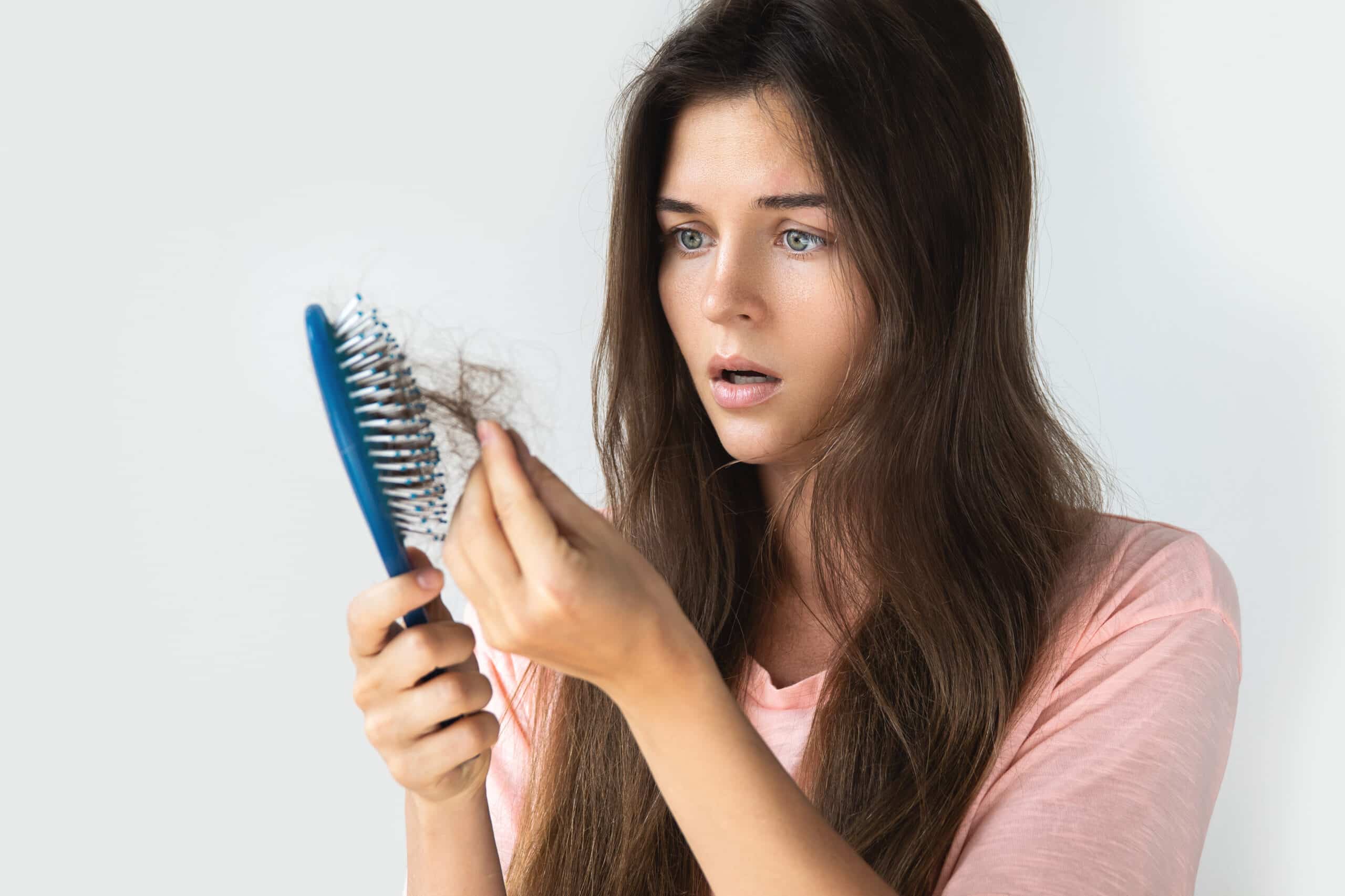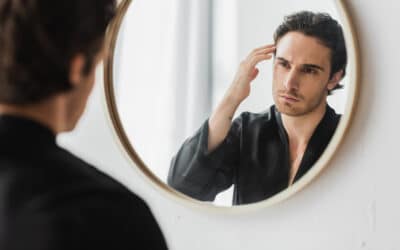Hair is often seen as a reflection of one’s personality and identity. Unfortunately, many people experience hair loss at some point in their lives, which can be emotionally distressing. Understanding the root causes of hair loss is the first step toward finding effective solutions.
In our expert guide, we’ll explore:
- the top causes of hair loss.
- prevention and remedies for loss of hair.
- proven treatment options.
-
Genetics and Hormones (Androgenetic Alopecia)
One of the most common types of hair loss is androgenetic alopecia, which is hereditary. Known as female-pattern hair loss and male-pattern baldness, this hereditary hair loss affects both men and women, with certain genes making individuals more susceptible to permanent hair loss. Hormonal changes can trigger this type of hair loss, leading to gradual thinning and eventual baldness.
How to Prevent and Treat This
- While genetic hair loss cannot be fully prevented without medical treatments.
- Following an overall healthy lifestyle can potentially offset these genetic factors by supporting the health of your hair follicles.
- Progressive balding and thinning hair can be corrected with minimally invasive hair transplant surgery such as SmartGraft, able to achieve natural-looking results.
-
High Stress
In today’s fast-paced world, chronic stress has become an almost ubiquitous part of life for many individuals. While it’s a natural response to life’s challenges, excessive or prolonged stress can have a profound impact on our physical and emotional well-being, including our hair health, pushing our follicles to a resting phase over the entire scalp.
How to Prevent and Treat This
- To combat emotional stress, find ways to relax and manage stress levels such as meditation or yoga.
- Quality sleep is essential for stress management and overall health. Aim for 7-9 hours of restful sleep per night.
- Consider speaking with a mental health professional or counselor to develop coping strategies for managing stress and anxiety.
-
Crash Diets and Poor Nutrition

Crash diets and severe caloric restrictions, often adopted in pursuit of rapid weight loss, can be detrimental to hair health. These diets tend to lack the essential nutrients and calories needed to sustain hair growth and overall bodily functions, putting you at risk of hair loss.
When the body is in a state of energy deficit and experiences nutritional deficiencies, it prioritizes vital functions over hair growth. As a result, hair may prematurely enter the resting phase, leading to the thinning of hair – or even permanent loss.
Our hair relies on a wide range of essential nutrients to grow, shine, and remain resilient. When we subject our bodies to restrictive diets or fail to consume a balanced array of nutrients, it can leave our hair follicles malnourished.
How to Prevent and Treat This
- A balanced diet full of essential vitamins and minerals supports the health of your hair follicles. Additionally, avoid smoking and excessive alcohol consumption.
- Hair is primarily composed of a protein called keratin. Without a sufficient intake of protein, the hair may become brittle, weak, and more prone to breakage.
- Various vitamins, such as vitamin A, vitamin C, and biotin, are vital for healthy hair. Incorporate foods such as salmon and spinach and consider dietary supplements to help with vitamin deficiency and iron deficiency.
- A supplement system such as LOCKrx or Nutrafol can be a great hair loss treatment, helping to support growth and strengthen brittle hair.
-
Smoking & Tobacco
In addition to nutritional factors, smoking is another lifestyle choice that can negatively impact hair health and has been linked to hair loss and premature graying.
In essence, smoking takes a toll on both the circulation of blood and the integrity of hair follicle DNA, resulting in adverse consequences for the health and appearance of your hair. If you’re seeking to maintain or restore healthy, vibrant hair, quitting smoking can be a significant step in the right direction – not to mention for your overall health as well.
How to Prevent and Treat This
- Refrain from the use of cigarettes completely and avoid second-hand smoke.
- Avoid other tobacco products such as vapes, chewing tobacco, and patches as well.
- Natural injections for hair loss can help promote blood flow and nourish the scalp hair, healing the effects of tobacco use and stimulating hair regrowth.
-
Medical Conditions
While genetics, lifestyle, and nutritional factors play a significant role in hair loss, it’s essential to recognize the influence of underlying medical conditions as potential hidden contributors to this concern. This can often be manifested as sudden hair loss, often caused by anemia, PCOS, thyroid diseases, scalp infections, fungal infections, and autoimmune diseases.
Additionally, medication used to treat health conditions such as blood thinners can affect your hair growth. The typical first signs of an underlying issue are increasing amounts of hair shedding as well as rapid hair loss.
How to Prevent and Treat This
- While these symptoms of hair loss are concerning, it’s important to see a physician to identify the underlying medical condition before seeking treatment for hair loss.
-
Traction Alopecia

While we’ve explored several common causes of hair loss, it’s important to shed light on a lesser-known yet increasingly prevalent type of hair loss called Traction Alopecia. This condition is often a hidden consequence of specific hairstyling practices and habits.
Traction Alopecia is a unique form of hair loss caused by consistent and excessive pulling or tension on the hair and scalp, often characterized by patchy hair loss and broken hair, particularly near the hairline. It’s common among individuals who engage in tight hairstyles or use hairstyling practices that put constant stress on the hair follicles, causing them to lose more hairs per day than normal.
How to Prevent and Treat This
- Avoid tight hairstyles such as ponytails and tight braiding that exert excessive tension on the hair and scalp. Opt for looser styles and avoid overusing hairpins and clips.
- Practice good scalp hygiene and massage to promote circulation and hair follicle health.
- If you enjoy wearing extensions or weaves, ensure that they are applied with care, and give your hair regular breaks to recover – they can be heavy, pulling on strands of hair.
Hair Loss is in Your Control

Hair is not just a physical attribute but also a reflection of our identity and personality. When hair loss becomes a concern, it can be emotionally distressing, affecting self-esteem and overall well-being. However, understanding the underlying causes of hair loss is the first step towards finding effective solutions and regaining the confidence that comes with a full head of hair.
Ultimately, your hair health is within your control. By implementing these strategies and seeking professional guidance, you can enhance the vitality of your hair, boost your confidence, and enjoy a fuller, healthier head of hair for years to come.
Book a consultation at Complete Hair Restoration in Houston today and reveal a new you!




